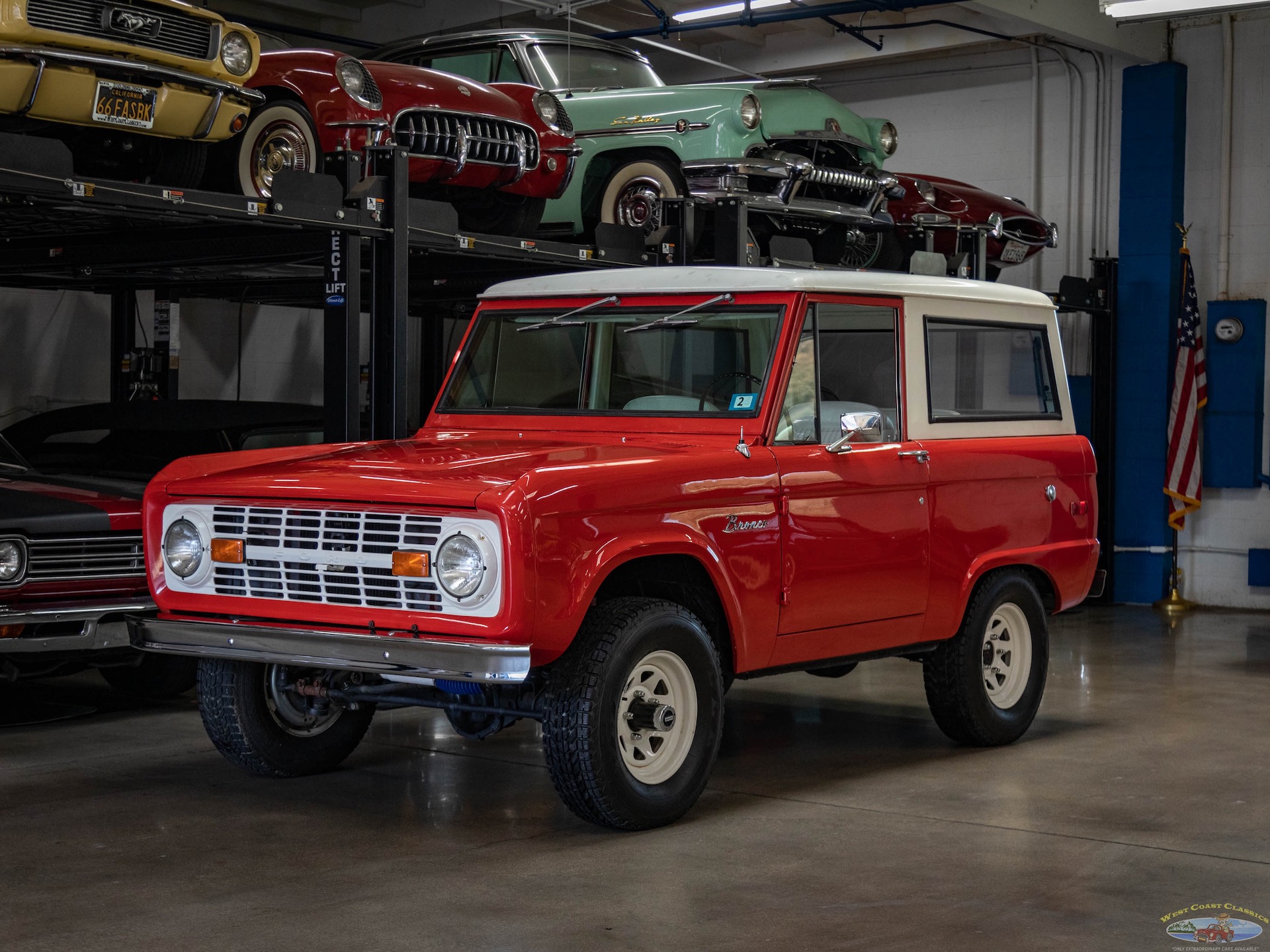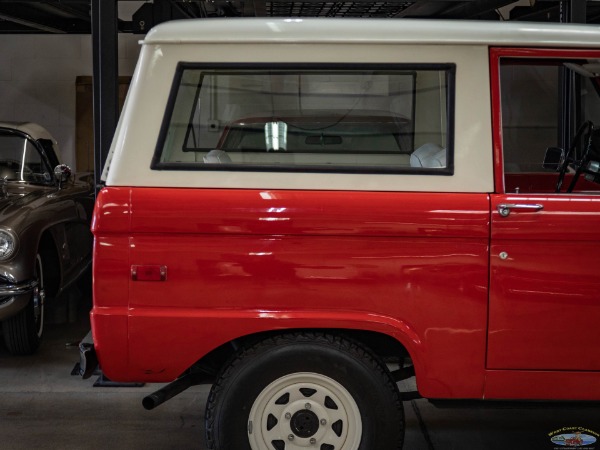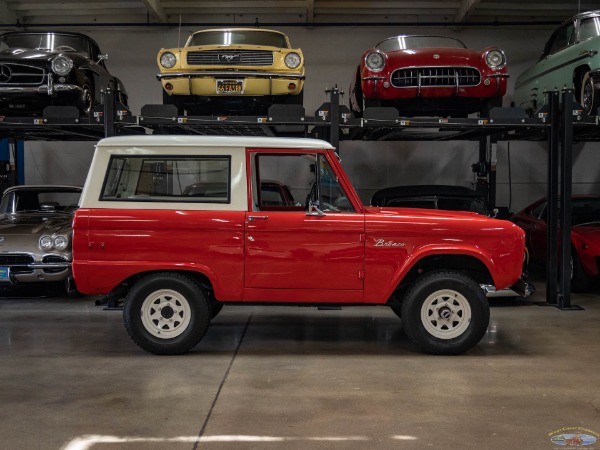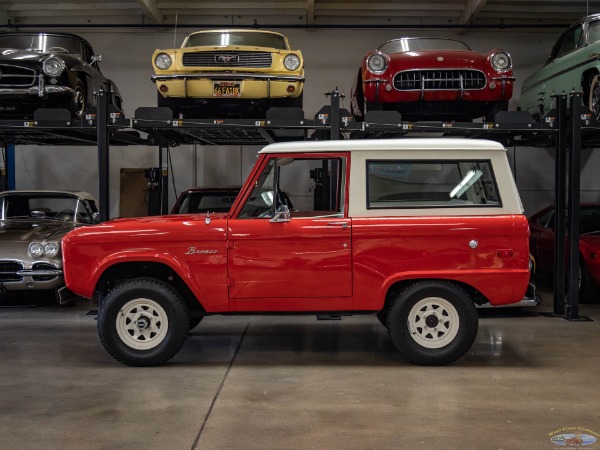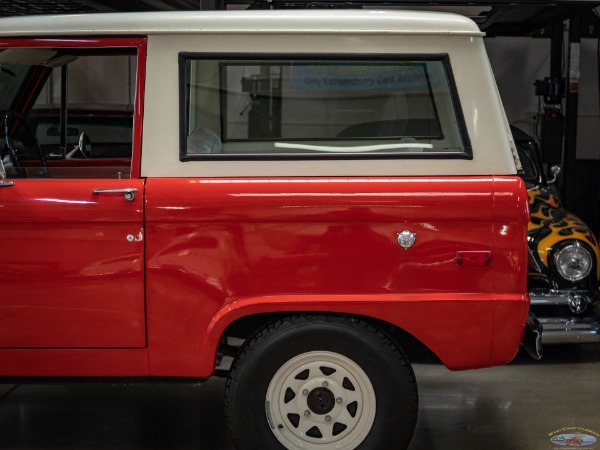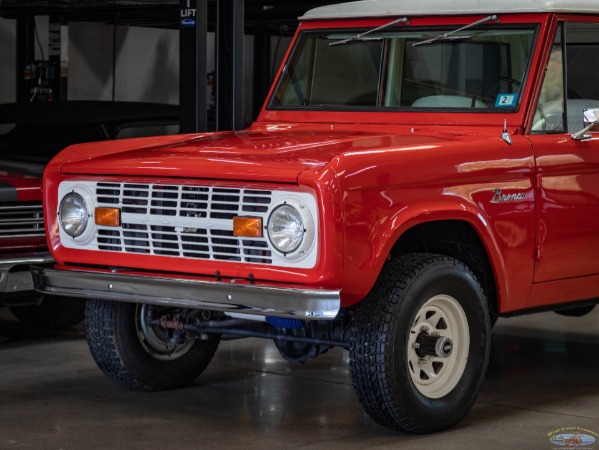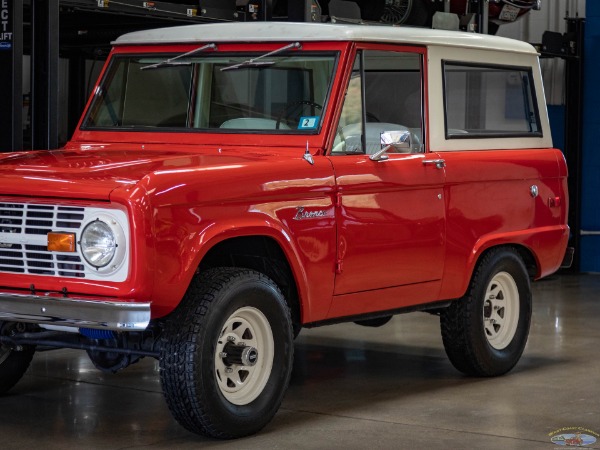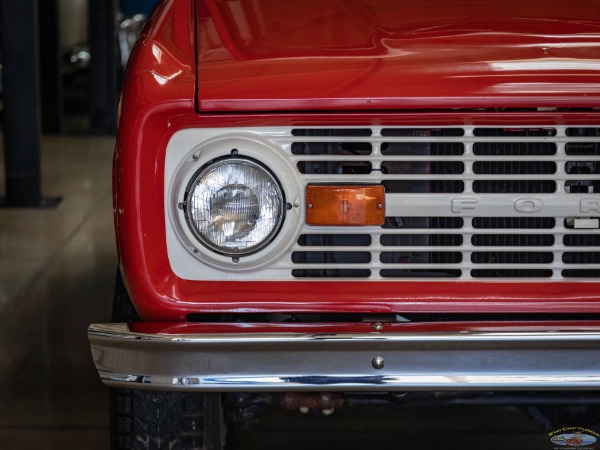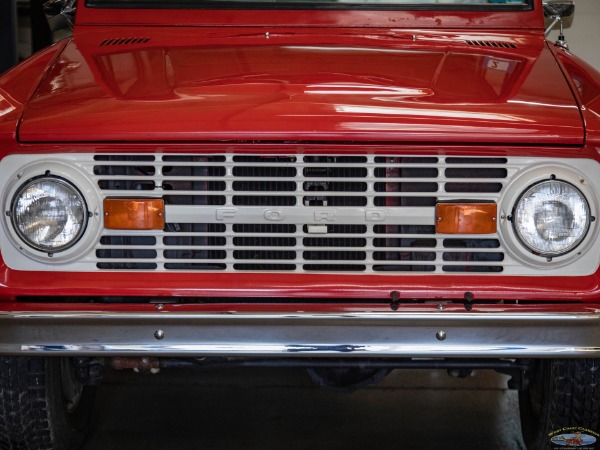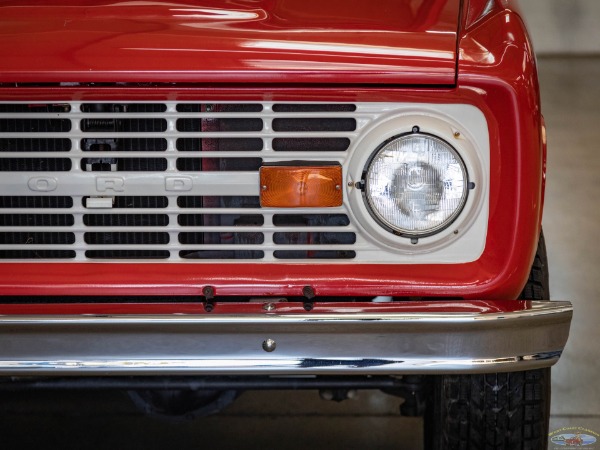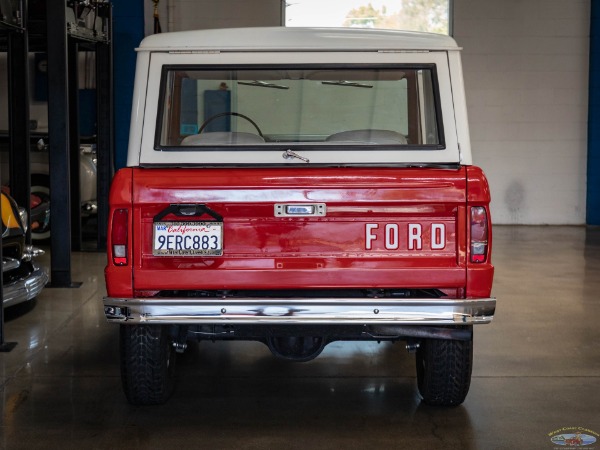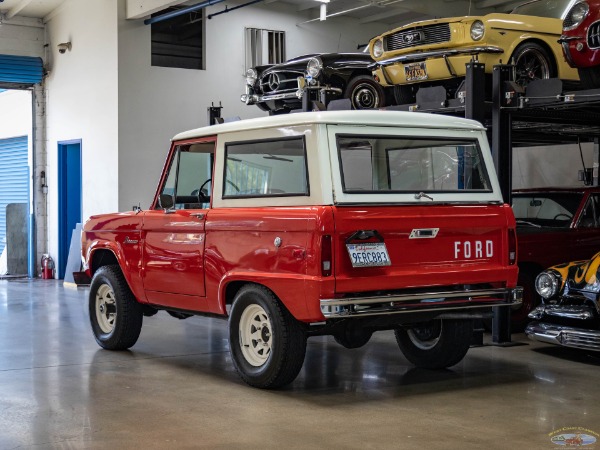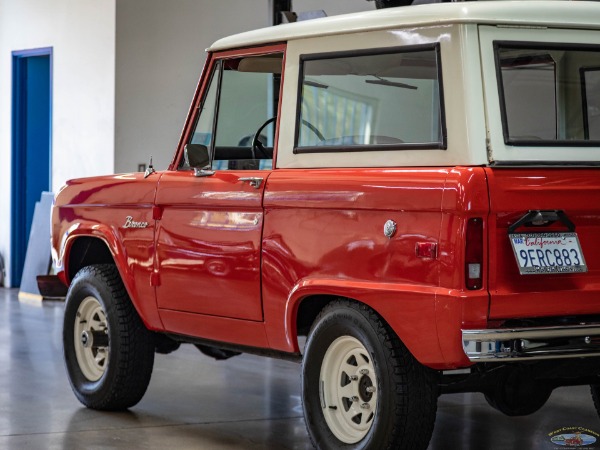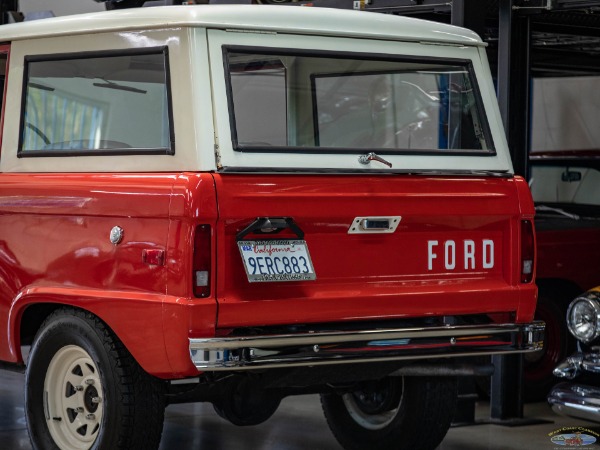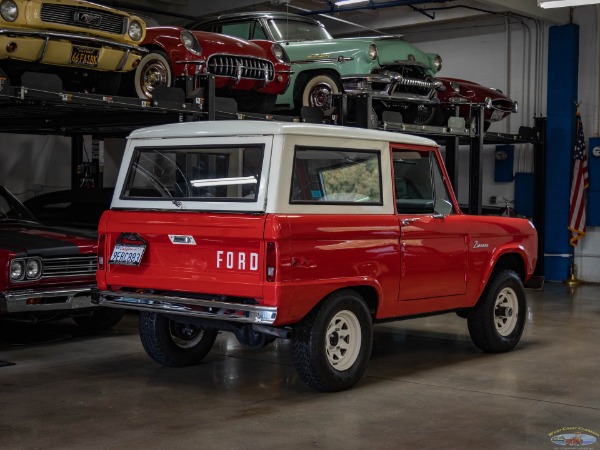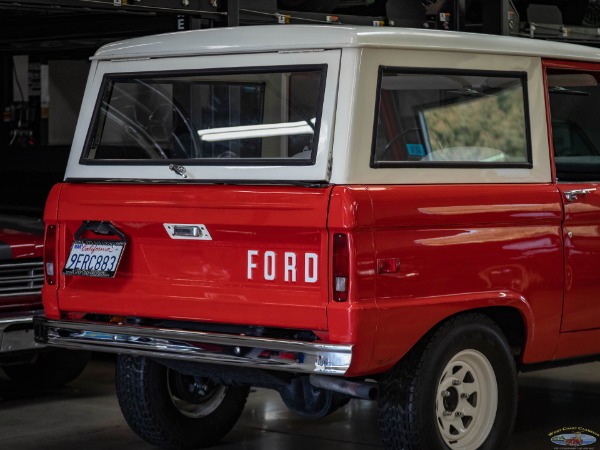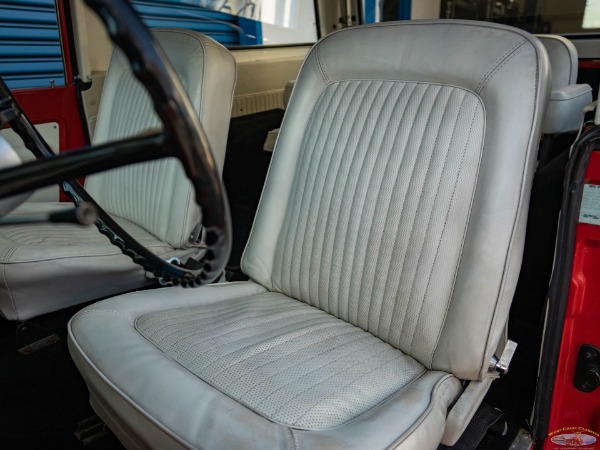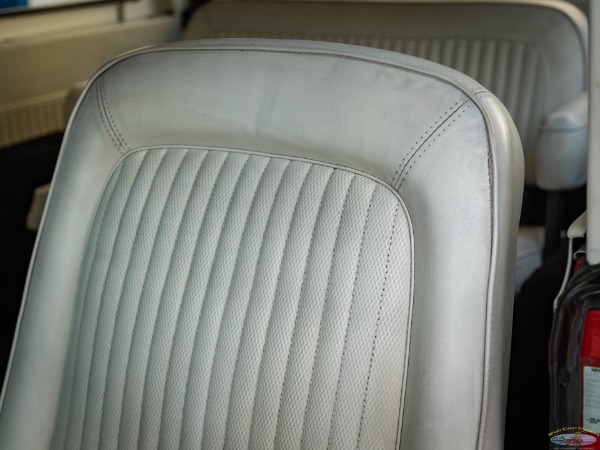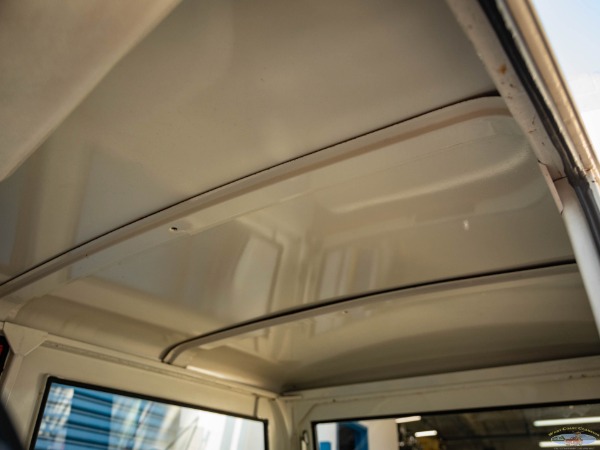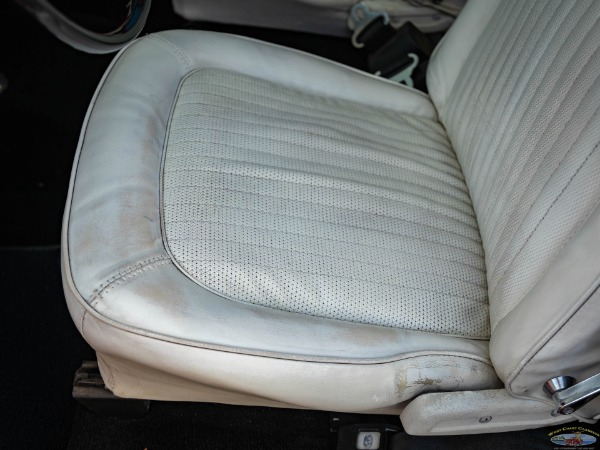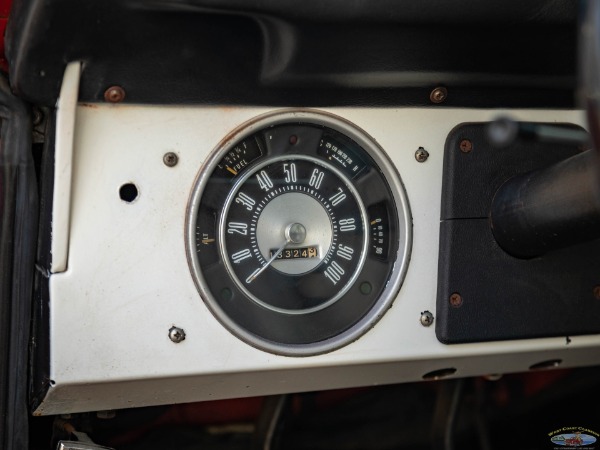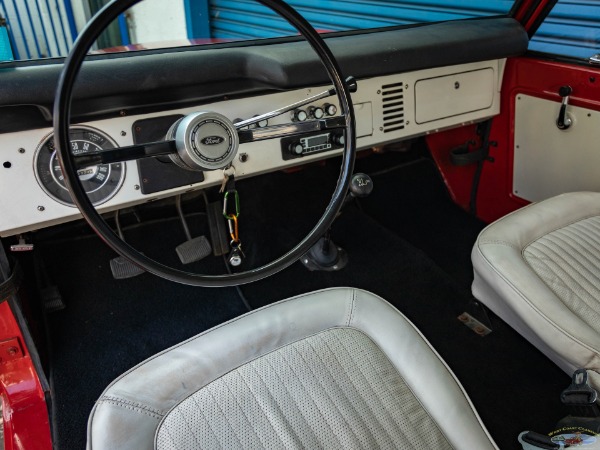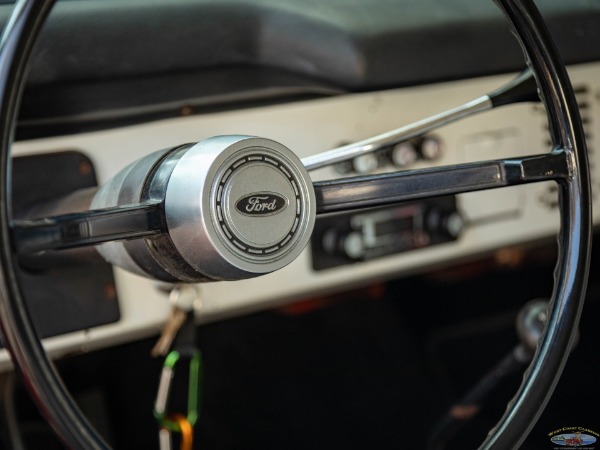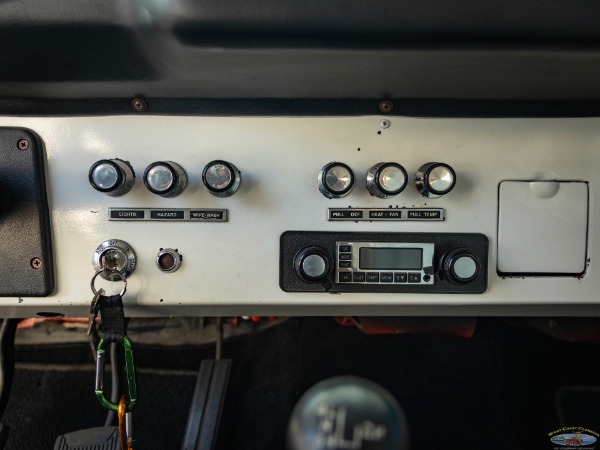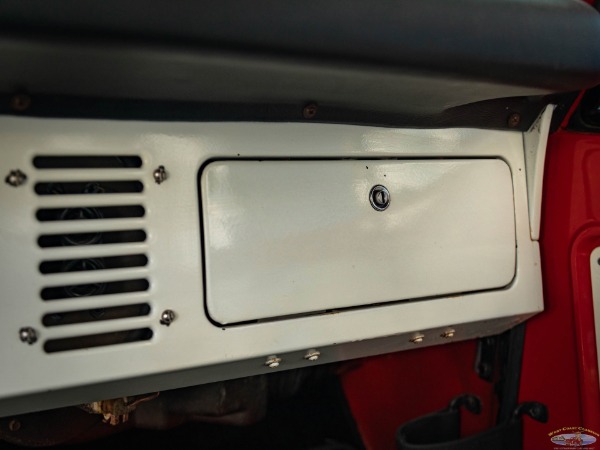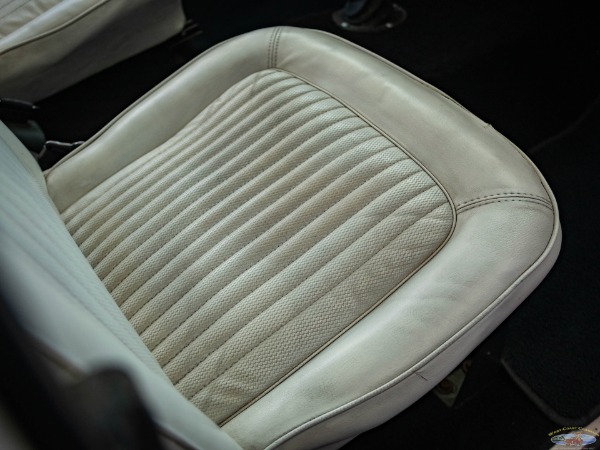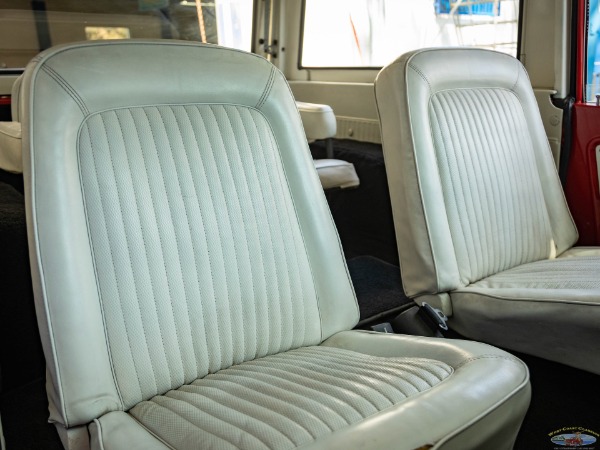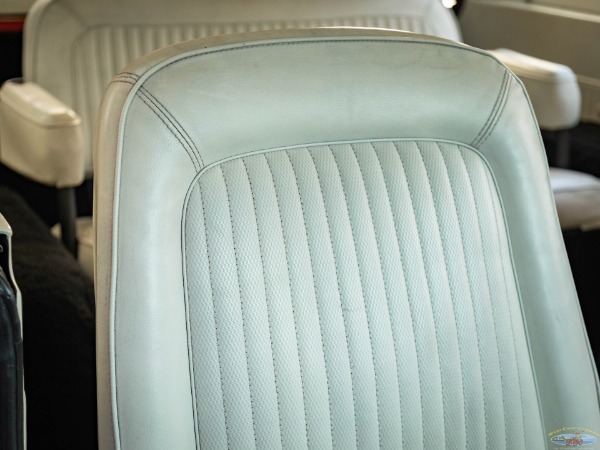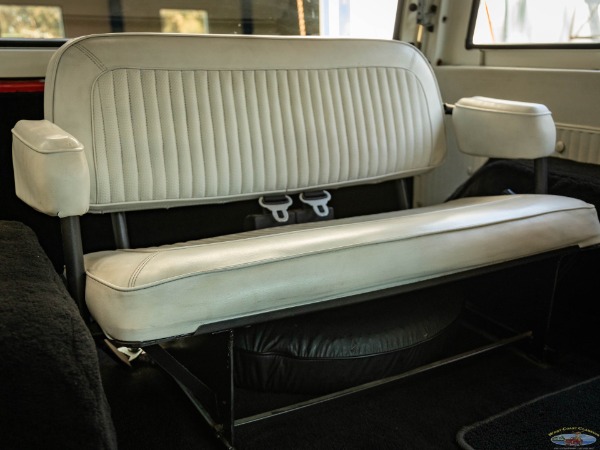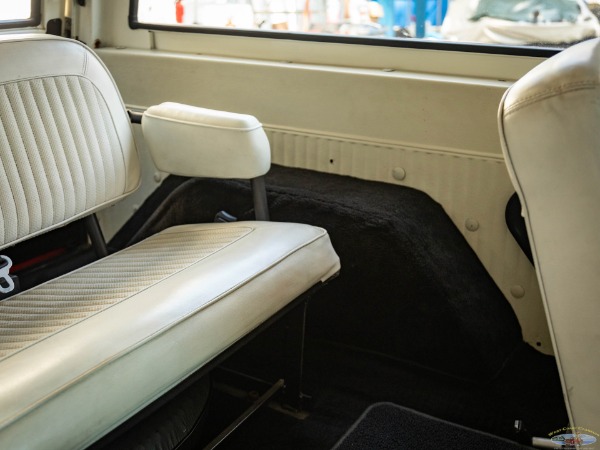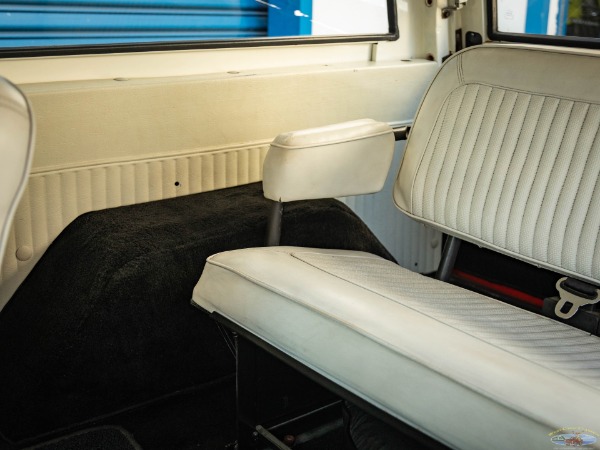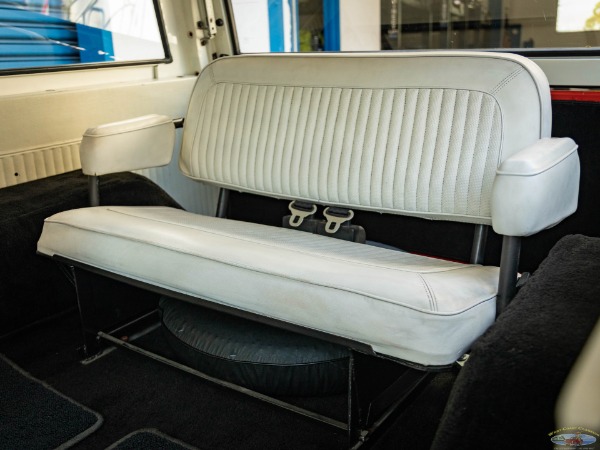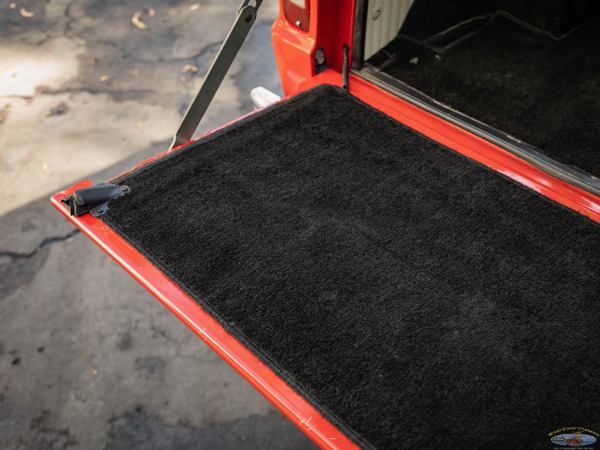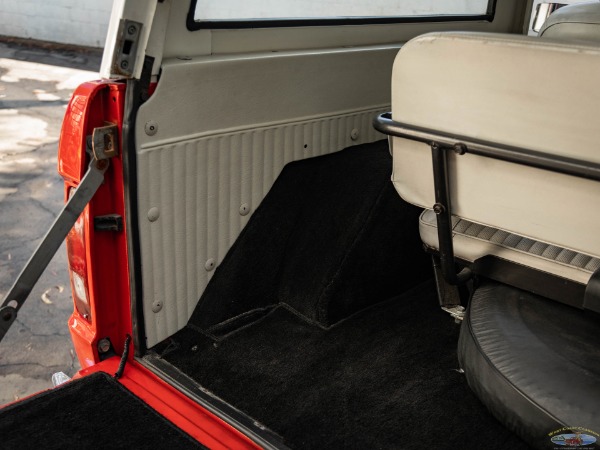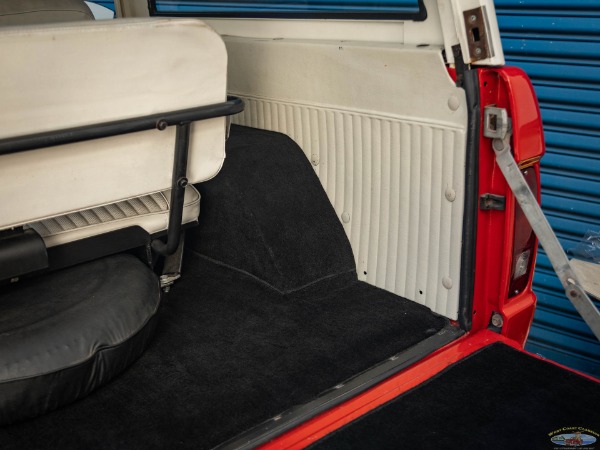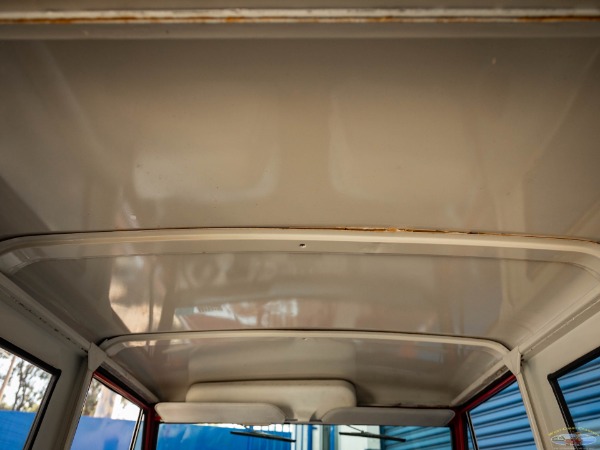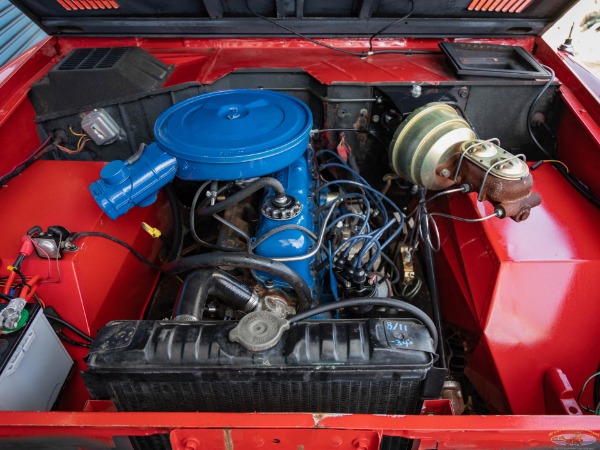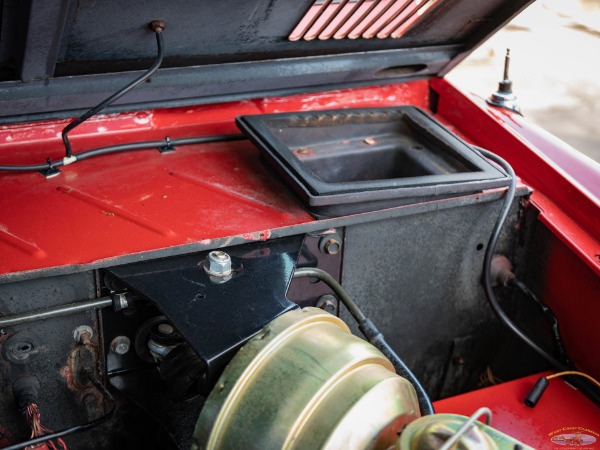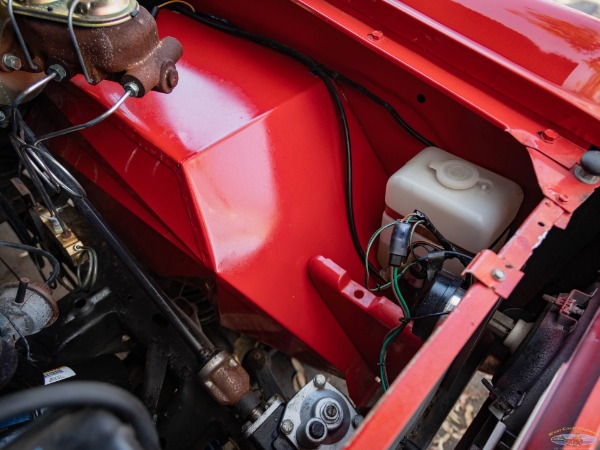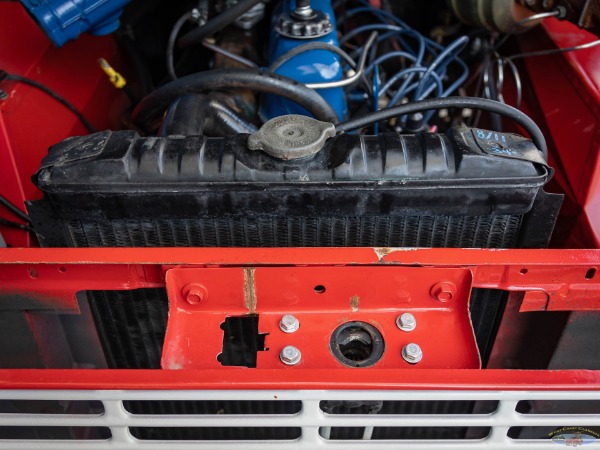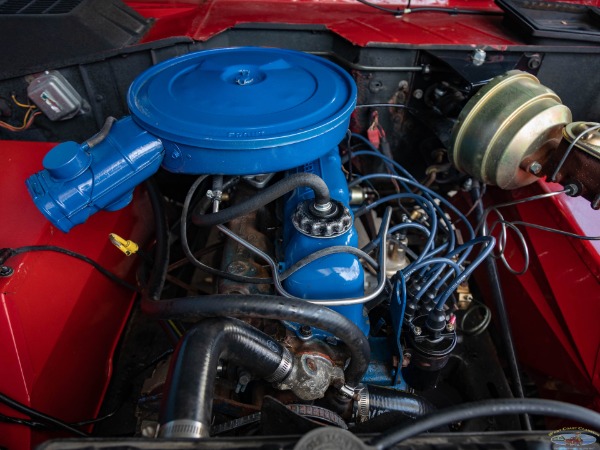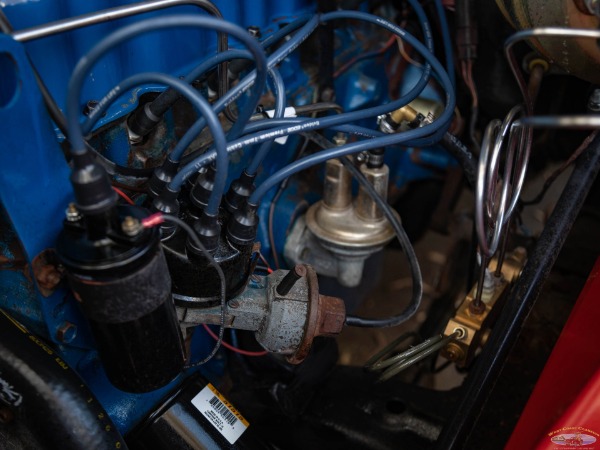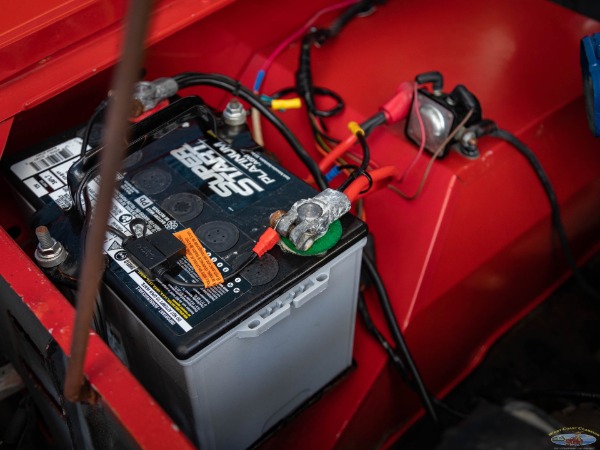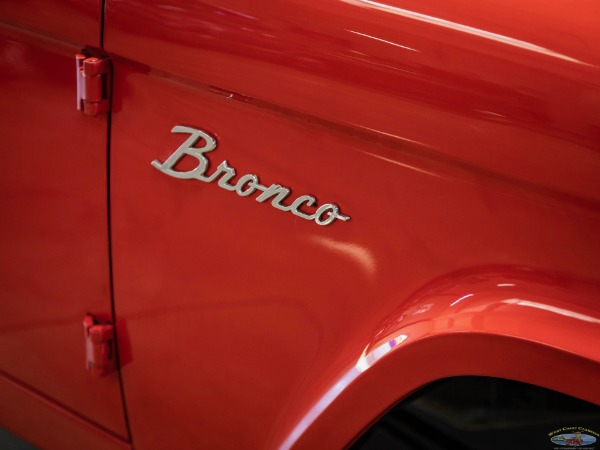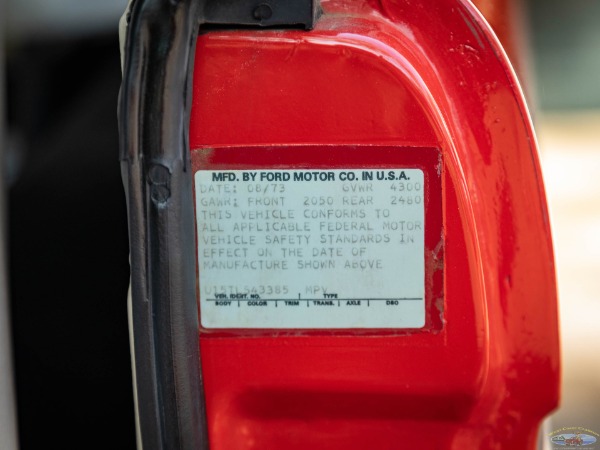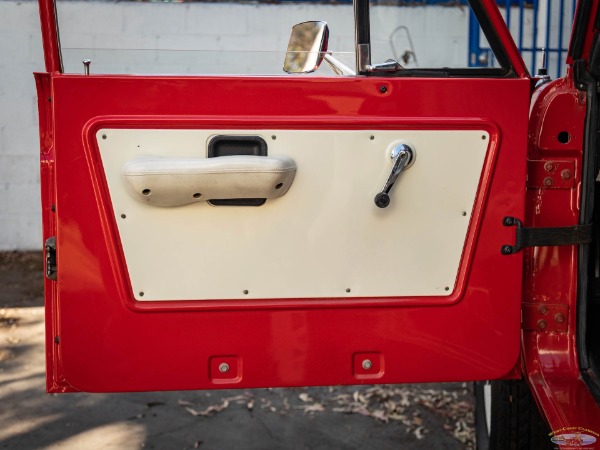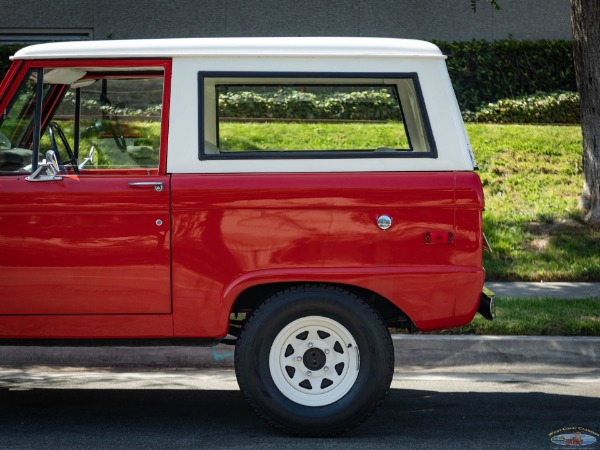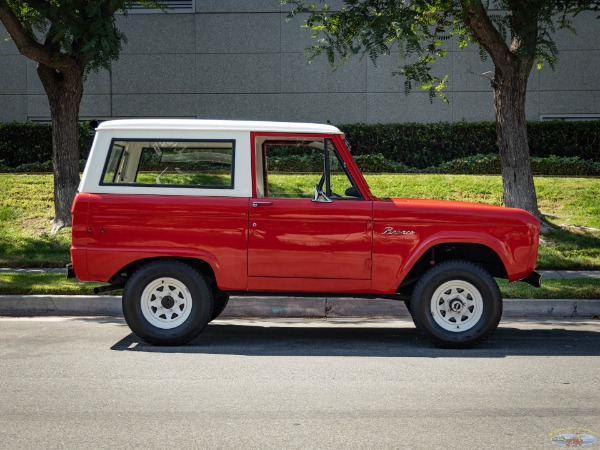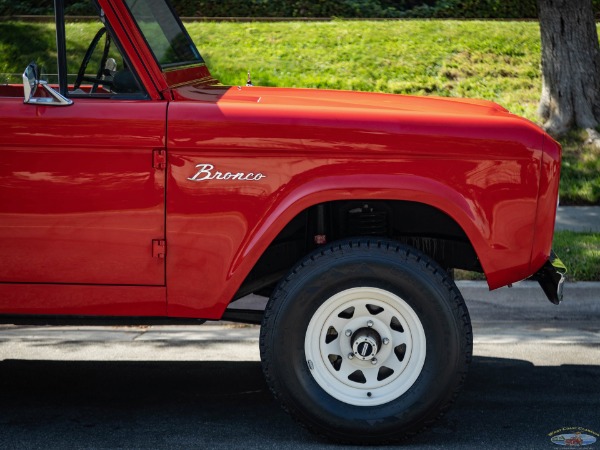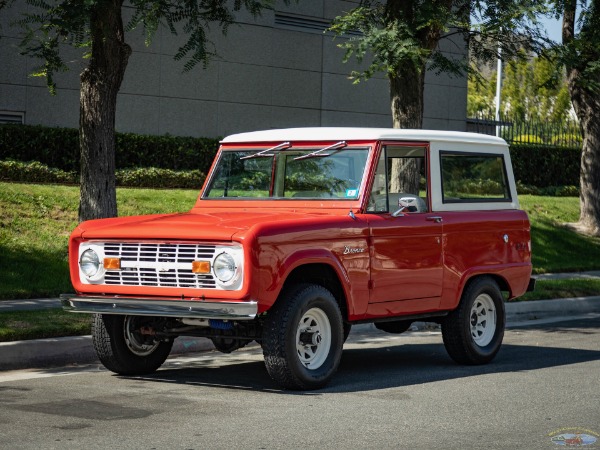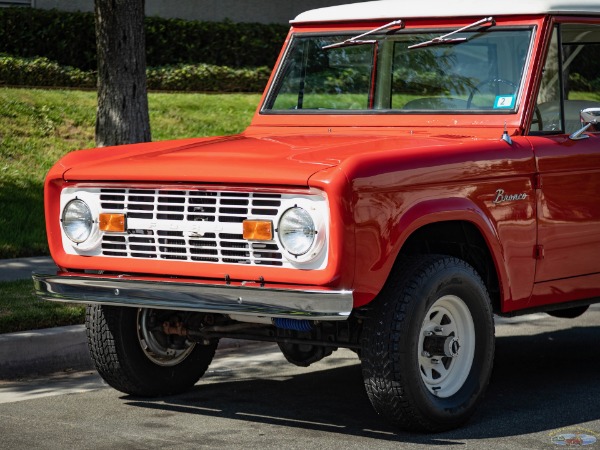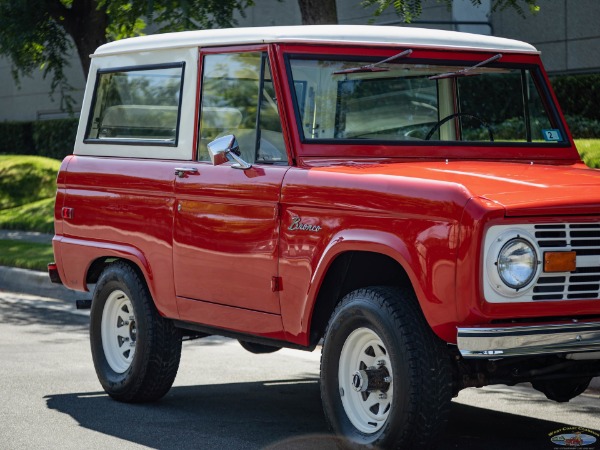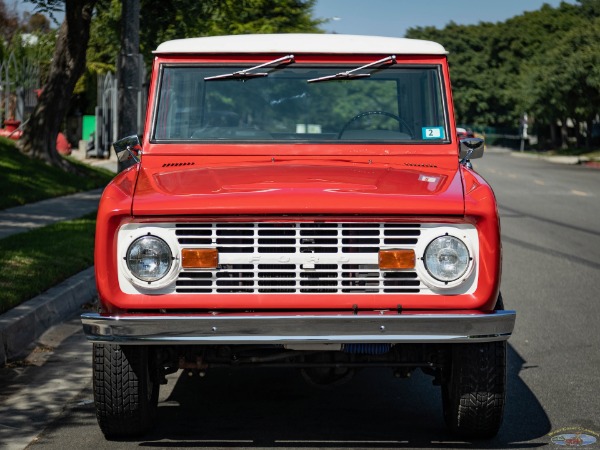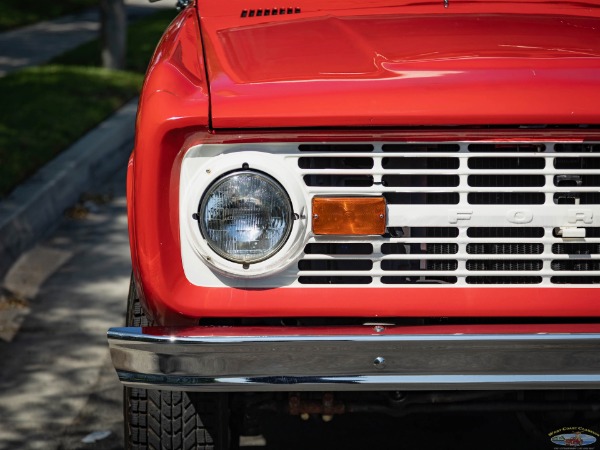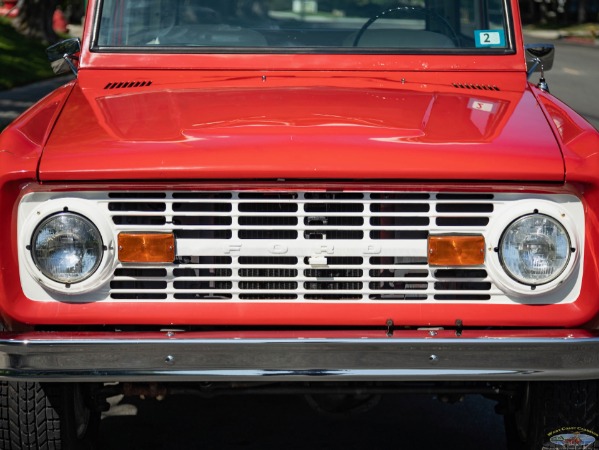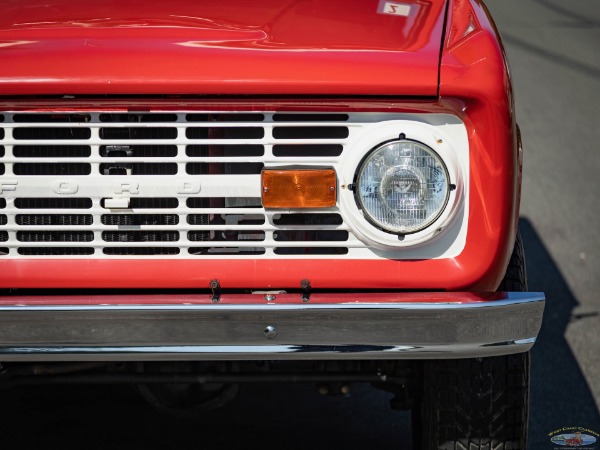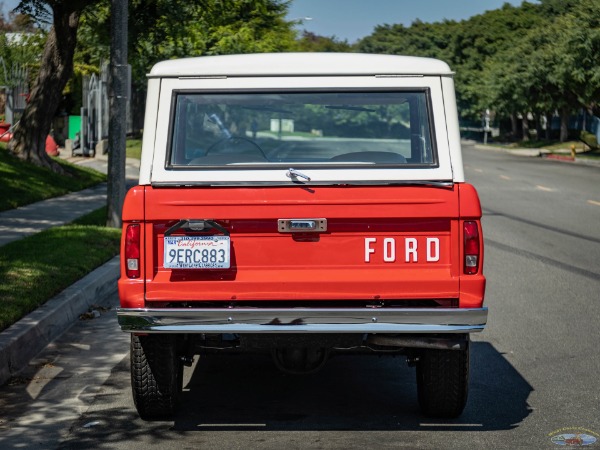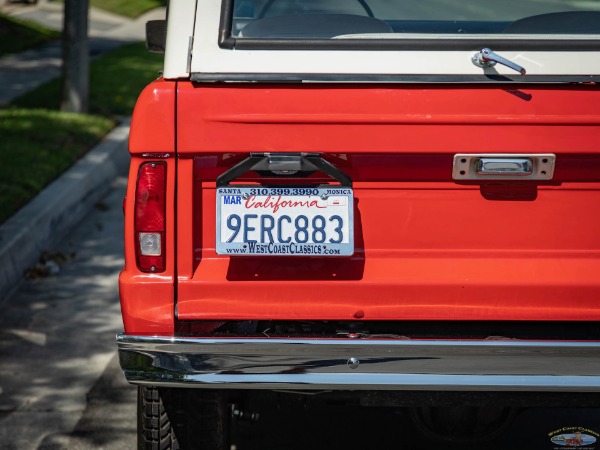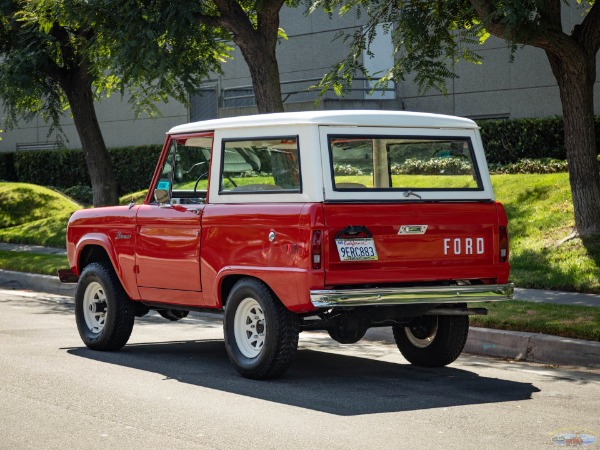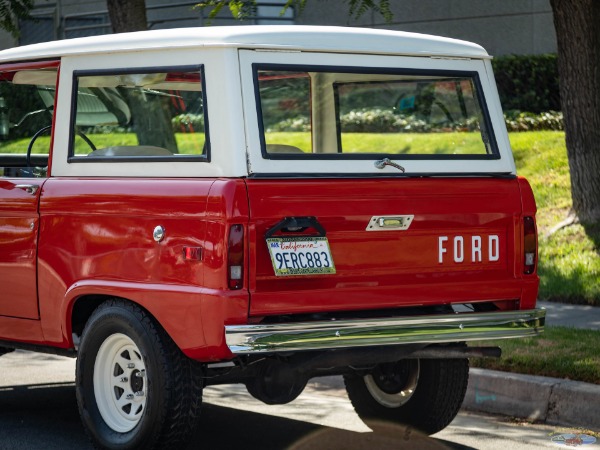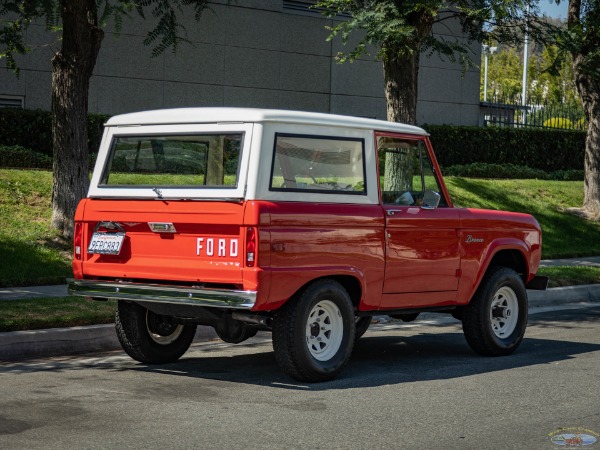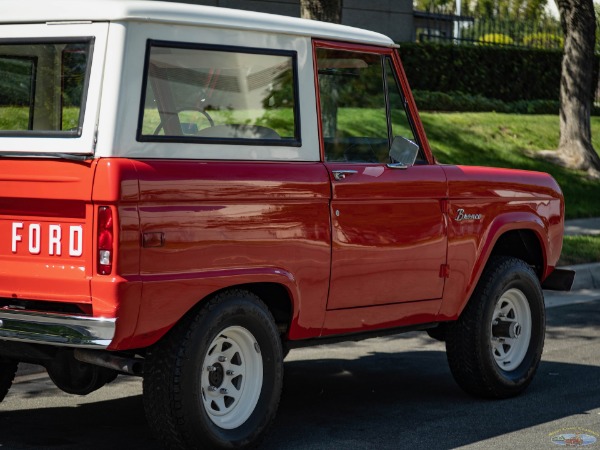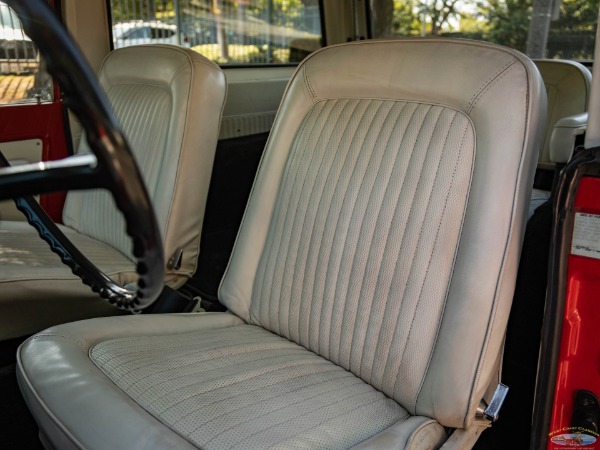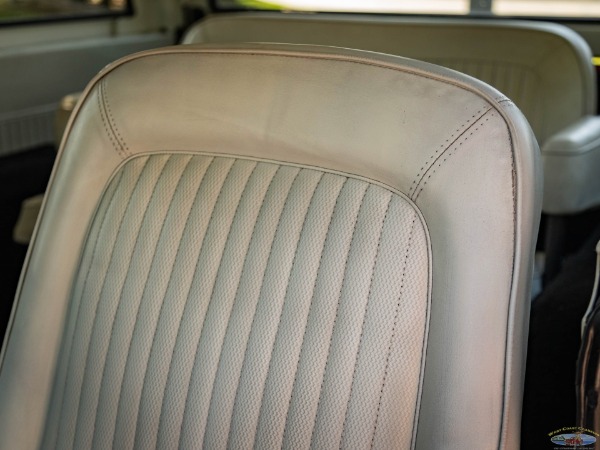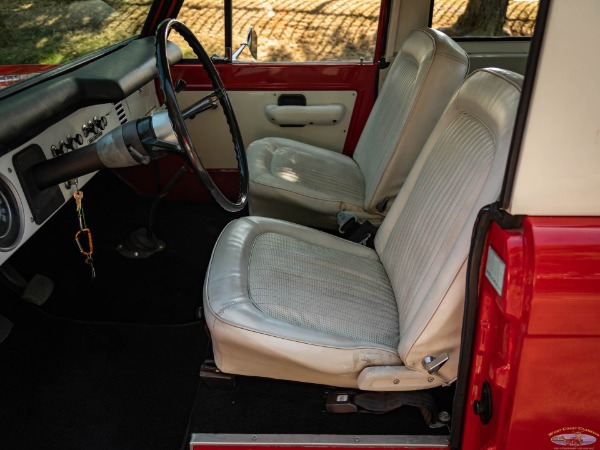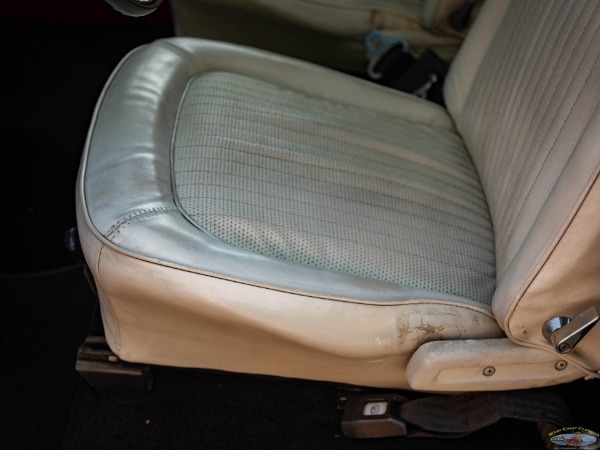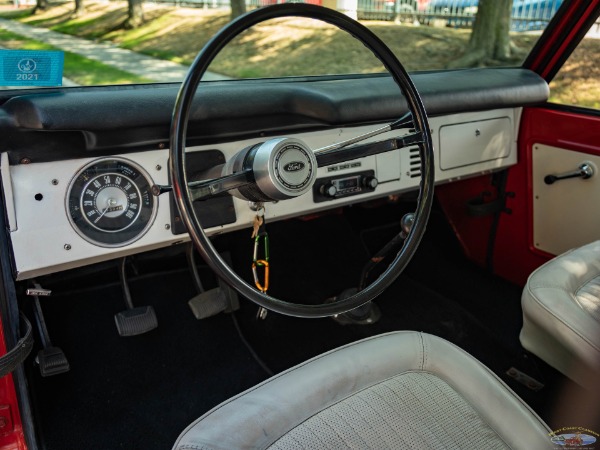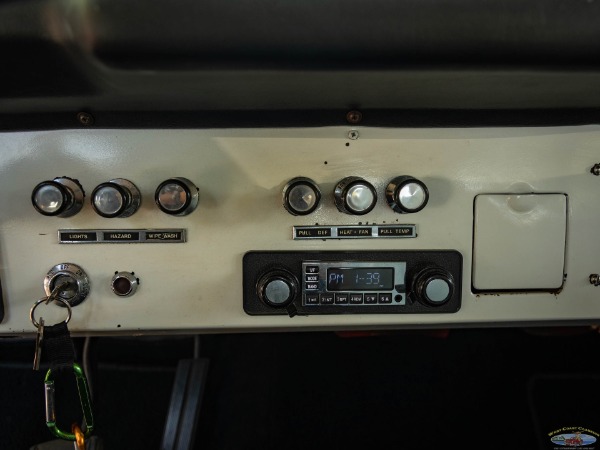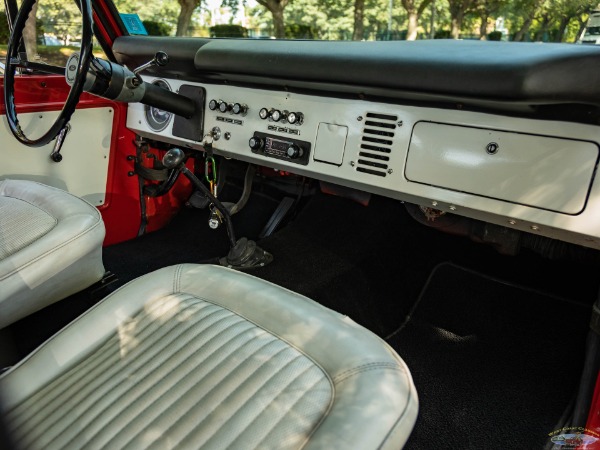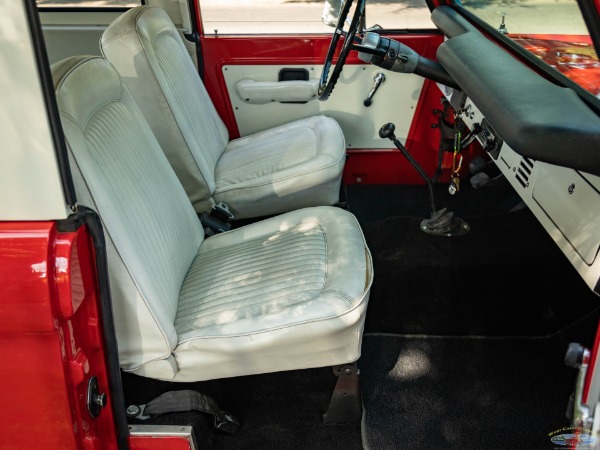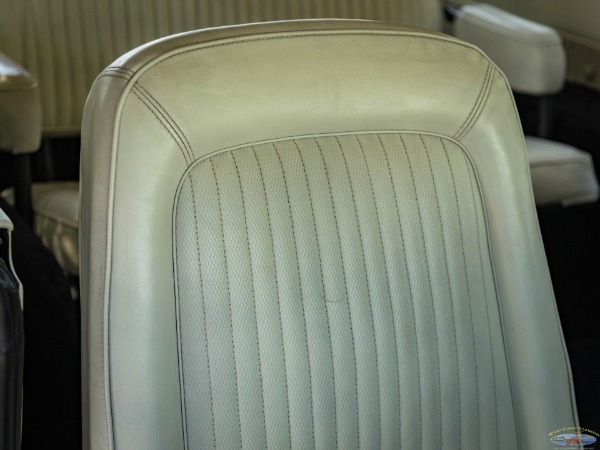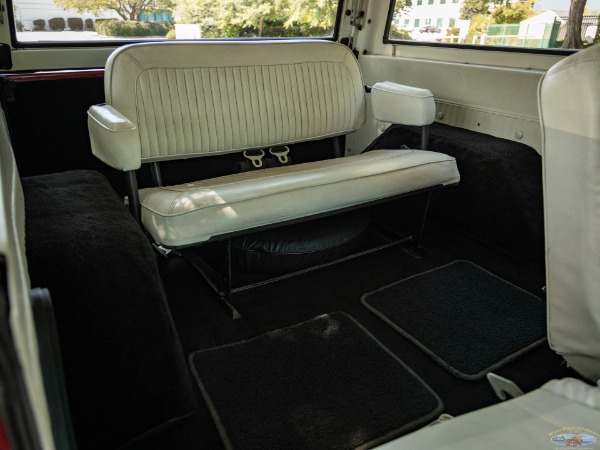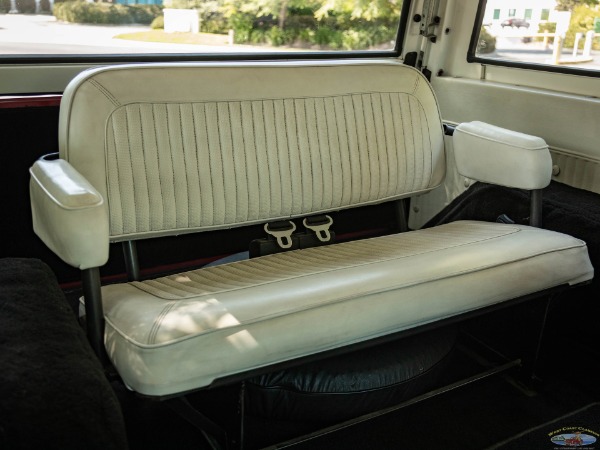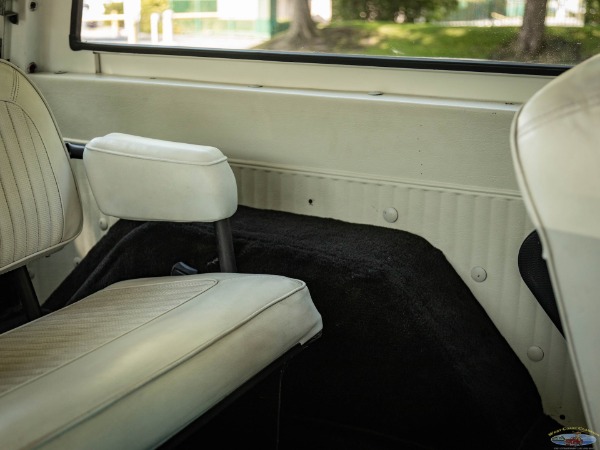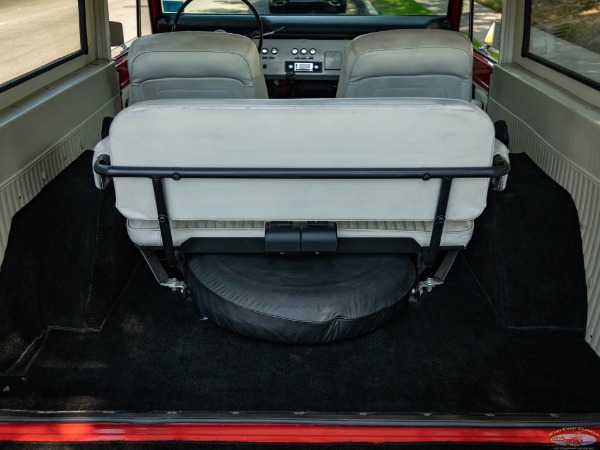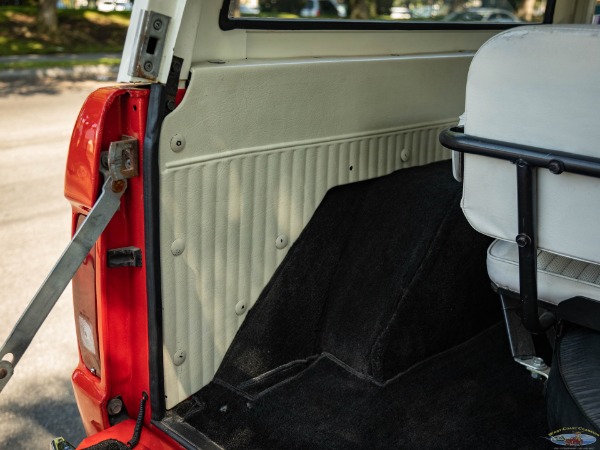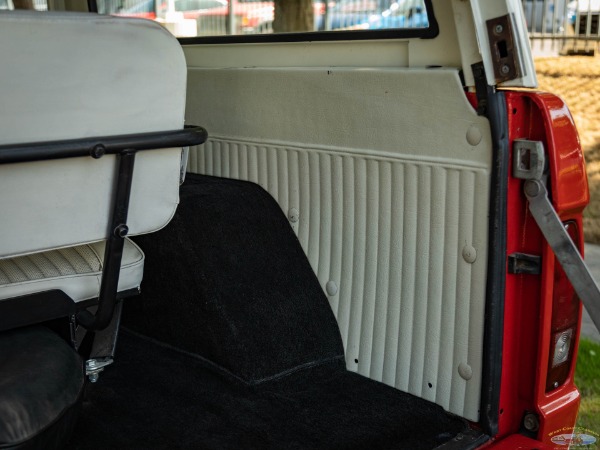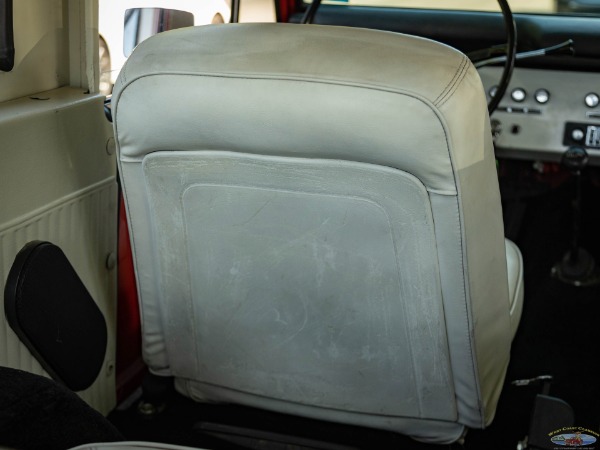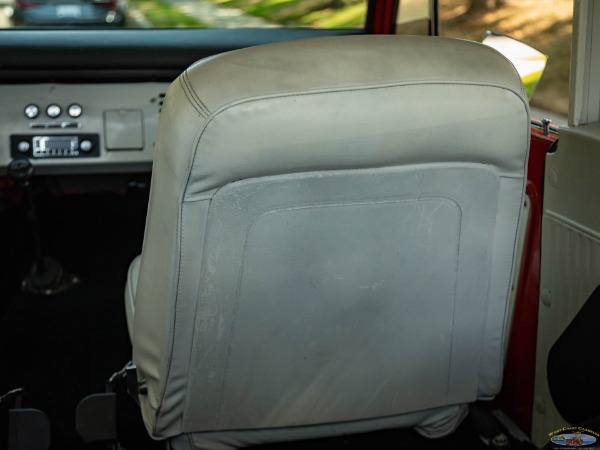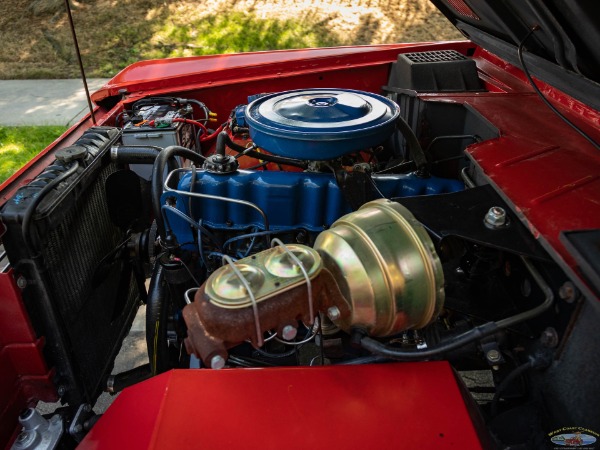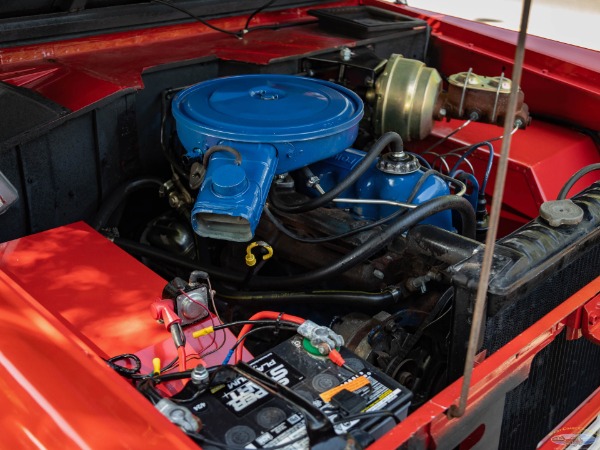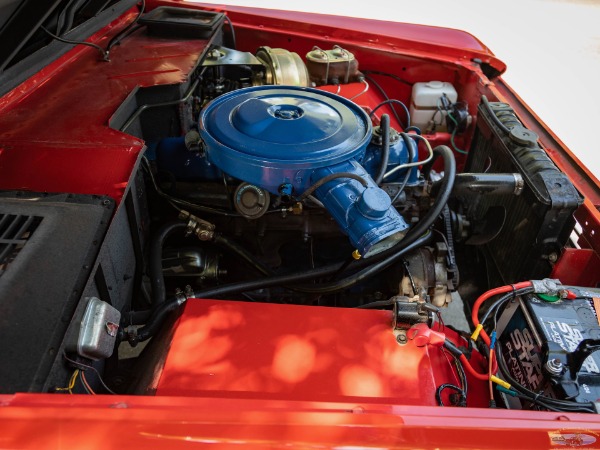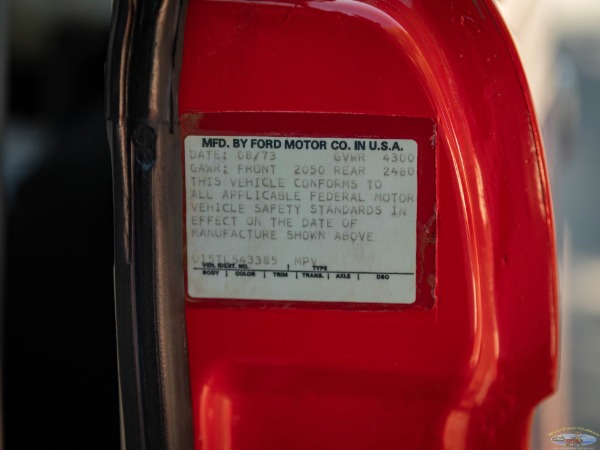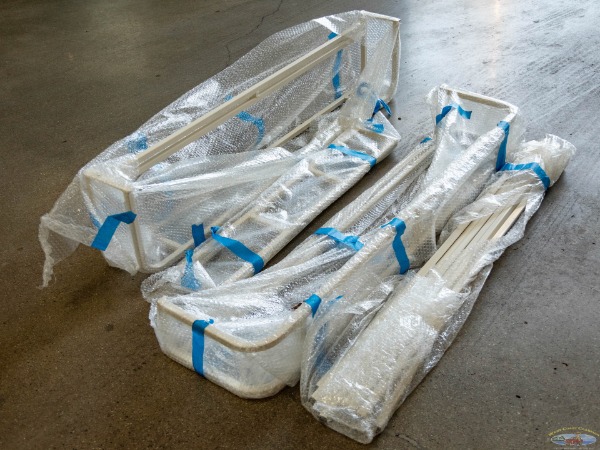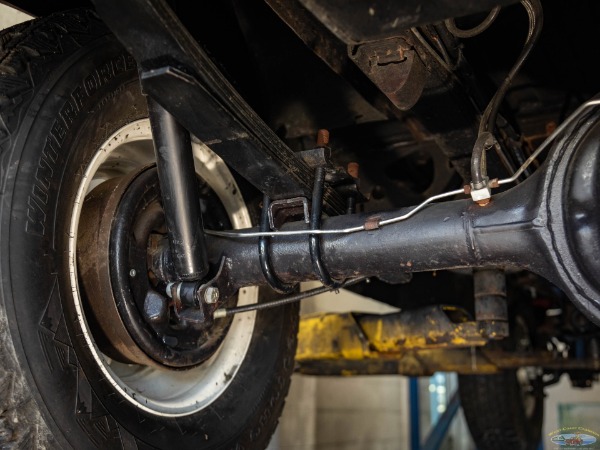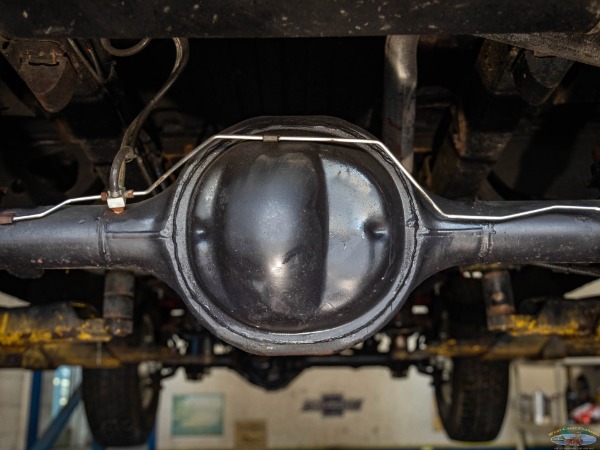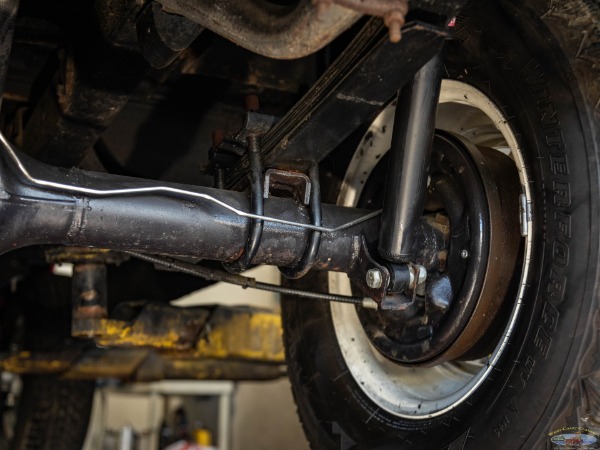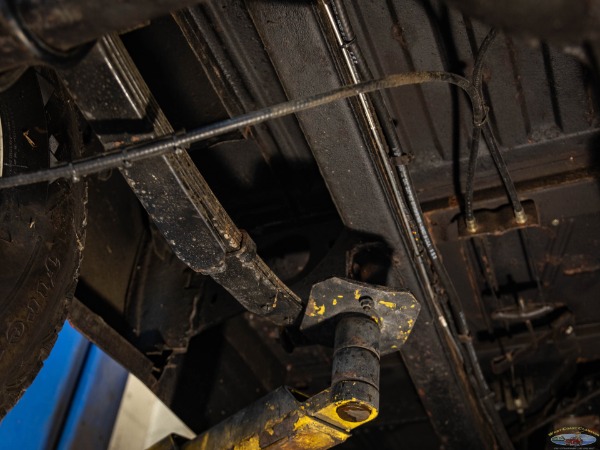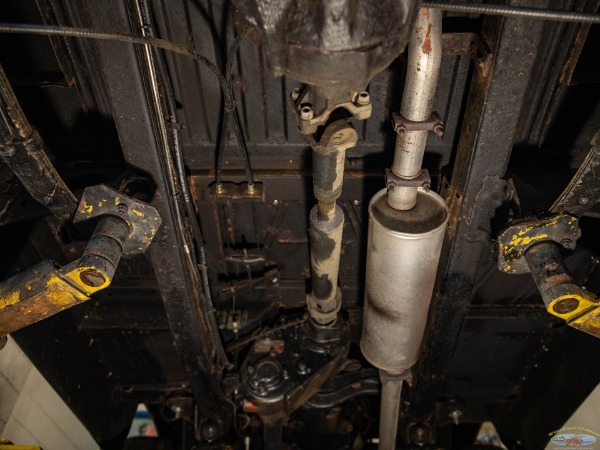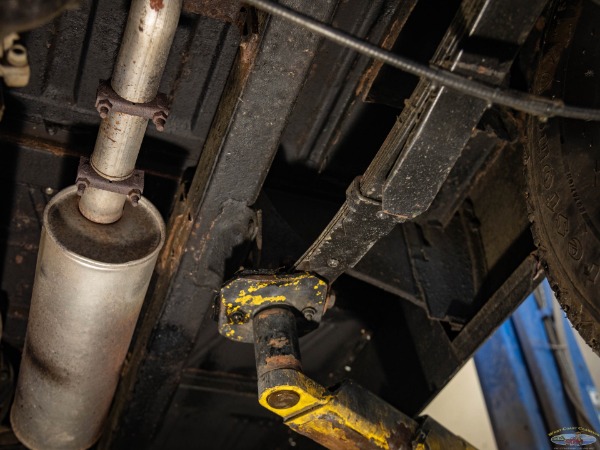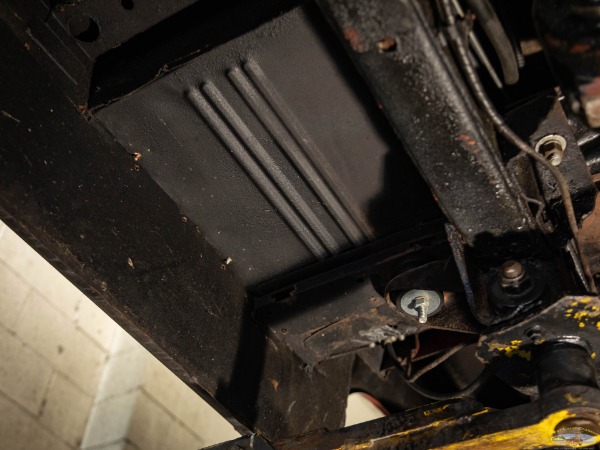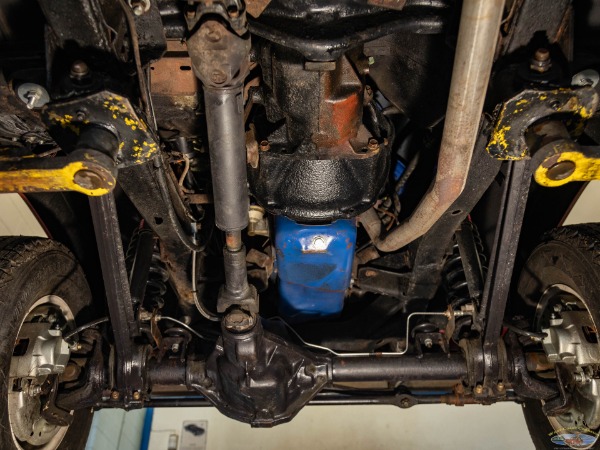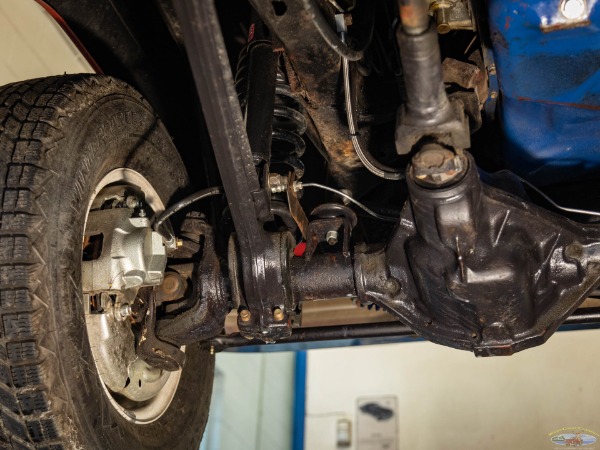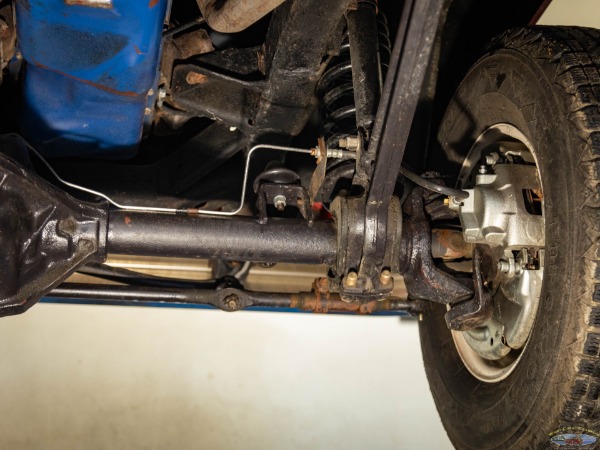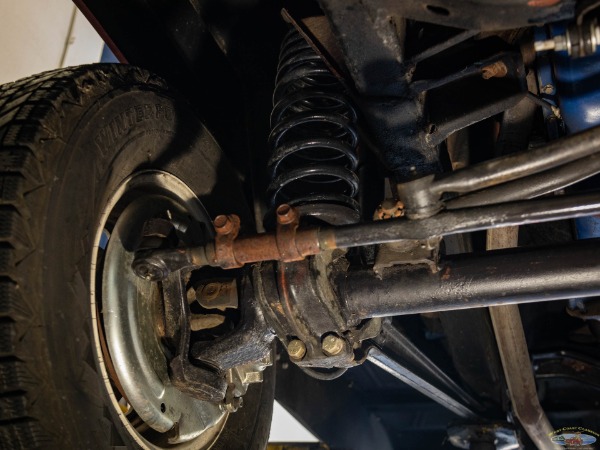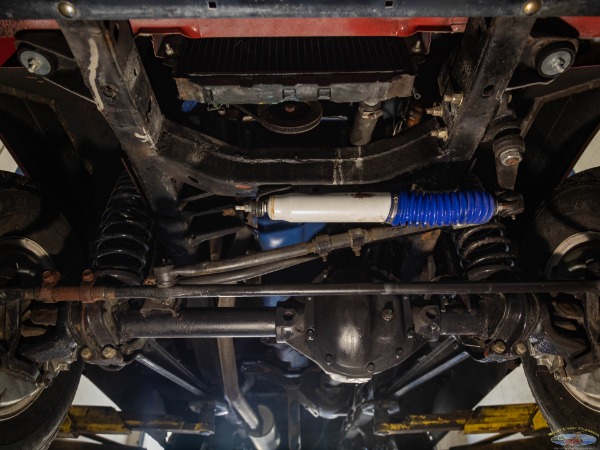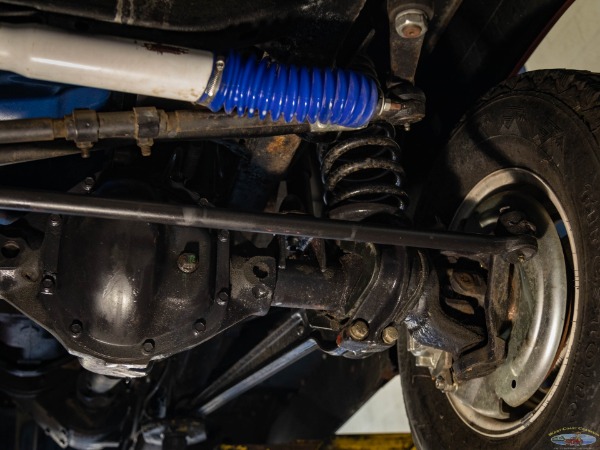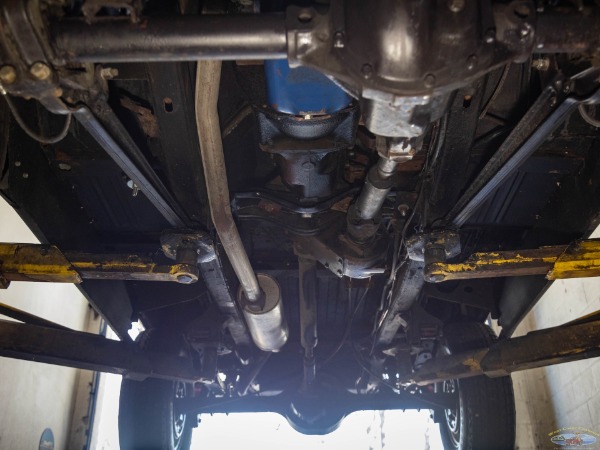The base price of a Ford Bronco was US$2,194, with a long option list that included front bucket seats, a rear bench seat, a tachometer, and a CB radio, as well as functional items such as a tow bar, an auxiliary gas tank, a power take-off, a snowplow, a winch, and a posthole digger. Aftermarket accessories included campers, overdrive units, and the usual array of wheels, tires, chassis, and engine parts for increased performance.
The only engine available in the first Bronco was the 102-hp 170-cu-in six cylinder, a dramatic upgrade over the Jeeps four-cylinder engine. (For the 1966 model year the CJ got an optional Dauntless 225 V-6.) In the Bronco brochure from 1966, the 200-hp 289-cu-in V-8 was promised for mid-March of 1967. The transmission was better, too. The Broncos three-speed manual was the first fully synchronized transmission in any 4X4 vehicle available in the United States. The Bronco also used a Dana 20 transfer case with a single T-bar shift lever with a positive lock knob, similar to the shifter on a Mustang, versus the Jeeps Dana 18 with twin sticks.
Mechanicals aside, the Bronco was well appointed inside compared to the CJ or the Scout. The package included rugged features like a fold-down windshield and vacuum operated wipers, but the Bronco also had doors with roll-up windows and a frame for the glass. The Bronco sported standard items like turn signals (an add-on for Jeeps), a padded dash, seat belts, and windshield washers. The Bronco Sports Utility pickup had a full square door opening with a half-cab roof, with a bench seat inside. The cargo area on the Sports Utility was separated by a metal bulkhead, providing a small bed separate from the passenger compartment. The Bronco Wagon had the same full doors, but with a roof that enclosed both cargo and passenger areas, a standard bench seat, optional bucket seats and an optional rear bench seat.
There were two notable changes for 1969, and the first was in the engine bay. Gone was the 289 V-8, and in its place came the 302 V-8, with a modest jump in horsepower (to 205 hp) but a significant jump in torque from 282 to 300 lb-ft. Broncos equipped with the 302 got a 302 V-8 emblem on the front fenders. The second major revision was the elimination of the Roadster body style. It was a slow seller from the get-go, and despite its cheap base price, many more Bronco customers opted for the full cab. A reinforced body structure helped to seal out both water and dust from the passenger cabin. The windshield wipers switched from vacuum operation to a two-speed electric motor after mid-1968 production. Unfortunately, the wiper motors location meant that the latches for the fold-down windscreen were now eliminated.
In '71 things got a bit beefier and the 1971 and above models are now usually considered the most desirable by enthusiasts. From 66 to 70, Ford used the a Dana 30 up front and a Ford 9-inch in the rear. Beginning in 71, you got a Dana 44 up front along with the 9-incher out back.
This is one very well maintained and beautifully presented mostly all original uncut 1973 Ford Bronco 4WD Sport Wagon with a the 200 CID 6 cylinder engine with the 3 speed manual transmission which shifts smoothly through the gears and the temperature always remains cool! You will look long and hard to find a finer looking or nicer driving example of this legendary 1973 Ford Bronco Sport Wagon!





